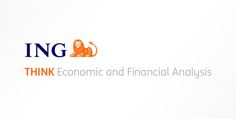BETA Technologies launches IPO of 25 million shares priced $27-$33
It’s been a big day in FX markets where a wholly weak US jobs report has pulled the rug from under Jerome Powell’s hawkish stoicism and stopped the US dollar’s rally in its tracks. It looks highly likely that the dollar has marked out a significant corrective high
The Solid Labour Market That Wasn’t
We should have known something was up when Federal Reserve dissenters Chris Waller and Michelle Bowman released rare joint statements 30 minutes ahead of the jobs data, explaining their dovish position. One could be forgiven for thinking this was an attempt to exert maximum pressure on Chair Powell should the jobs numbers prove weak – which they were.
As James Knightley discusses here, the huge back-month revisions now undermine the Fed’s key stance that the labour market has been solid and that a pre-emptive rate cut was not needed.
The huge drop in short-dated rates (now compounded by a resoundingly soft set of ISM manufacturing data) has triggered 9bp of bullish steepening in the US Treasury curve on the view that the Fed will be forced to act in September. As James writes, it looks hard to argue with a Fed cut then unless there are some sharp upside surprises in the inflation data or this soft jobs data somehow reverses in the August release.
Corrective Dollar High Looks to Be in Place
Wednesday’s bearish flattening in the curve, which sent the dollar 1% higher across the board, seems like a distant memory. And that’s fair because today’s data has provided a reset on Fed thinking. Leading the dollar lower today has been USD/JPY, where the soft payrolls report has knocked 1.8% off the S&P 500 so far – presumably on the view that US domestic demand might not be quite as resilient as first thought – and perhaps faces further challenges as US businesses are forced to pass tariff hikes through to consumers this quarter.
The story for coming months will be which of the two opposing forces dominates: e.g. will labour market data deteriorate enough to cement the September rate cut and a deeper easing cycle? Or will the pick-up in tariff-driven inflation force the Fed to continue favouring modestly restrictive policy? The size of today’s backward revisions in the data suggests the momentum will be with the former.
If equities stay offered, it will be the likes of USD/JPY and USD/CHF which lead the dollar lower again. However, calling a top in US equities on the back of some softish payroll data – and a Fed potentially cutting rates – remains a dangerous game given the powerful forces in play. That’s why we think there could be continued interest in emerging market currencies and dollar-funded carry trade strategies as we discuss here.
What seems a little clearer to us is that a corrective high is in place for the dollar – e.g. just below 1.14 for EUR/USD and close to 151 in USD/JPY. These weren’t too far from the levels we discussed in July’s FX talking publication. We hadn’t expected EUR/USD to push back into the 1.18/20 until much later in the year.
But depending on whether the labour market data deteriorates further – enough for the Fed to increasingly look through the temporary pick-up in inflation – those higher levels could be seen much sooner.
We’ll also keep a close look on the FX option market where a continued rise in three-month traded volatility and the risk reversals being bid up even further in favour of euro calls will tell us that the EUR/USD rally has legs. For reference, the three-month risk reversal skew for euro calls is now 0.43% versus a bullish peak in May of over 1%.
Disclaimer: This publication has been prepared by ING solely for information purposes irrespective of a particular user’s means, financial situation or investment objectives. The information does not constitute investment recommendation, and nor is it investment, legal or tax advice or an offer or solicitation to purchase or sell any financial instrument. Read more
